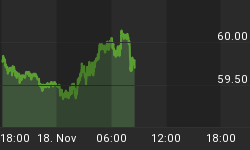This morning's employment report looked good enough on the surface to rekindle talk of an end to the Fed's debt monetization program. So in addition to buying stocks at the open, traders began their day by dumping bonds. The 10-year Treasury yield is up by over 8% in early trading, to almost 2.7%.

Now the question is, which of these two opposing forces -- rising employment and rising interest rates -- predominates. Specifically, are rising interest rates a sign of systemic health or an arrow aimed at the heart of an overleveraged society? A few things to look for: recalculations of the deficit in light of spiking interest costs, comparisons of US and Japanese yields and speculation about what this means for Japanese rates -- followed by dire analyses of Japan's future borrowing costs -- and last but not least, a growing concern for the hundreds of trillions of dollars of interest rate derivatives that now have one counterparty deeply in the red.
In fact, as of 10:20 EST some of the above might already be filtering into stock prices:

















